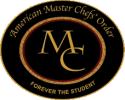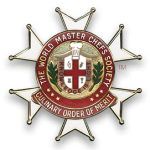Restaurant owners know that they’re responsible for ensuring the safety of their employees and patrons.
There’s a lot that can go wrong in a commercial kitchen. Hot equipment can cause painful burns. Broken glass can cut employees or end up in a customer’s food. Muscle strains due to repetitive motions are common hazards in the hospitality industry, even for young workers.
In this blog, we’ll talk about restaurant safety in the context of breakages and share tips on how you can reduce breakages in your kitchen.
The impact of commercial kitchen breakage
Even if your restaurant workers are careful with equipment, breakages happen. That’s why it’s important to:
- Acknowledge that breakages are part of the cost of doing business, and
- Understand the impact they have on your budget and operations.
Financial impact
In the restaurant industry, broken dinnerware and glassware aren’t seen as major costs. But they do add up, and they can take a toll on your kitchen’s budget in surprising ways.
Restaurants often want to present a unified tablescape with a coordinated range of serving pieces, dinnerware, and flatware. If you’ve invested in matching pieces, you’ll have to replace them when they break. If you can’t find replacements easily, you’ll have to accept a less cohesive tablespace or replace your entire glassware or dinnerware collection.
Operational impact
When dinnerware, glass, or even flatware breaks in your restaurant, it disrupts the flow of your kitchen and dining room, causing service delays and serious reputational damage.
Reduces diner and employee safety
Broken equipment is dangerous for both your employees and your diners. Even a superficial cut from a shattered plate could become infected, and broken glass or shards of dinnerware could become embedded under the skin.
Contaminates food items
If a piece of glass or dinnerware falls onto a plate, it could have serious health consequences. Diners who swallow a piece of glass might need emergency medical attention. And even if the glass or ceramic shard is found before it’s ingested, the entire meal must be tossed and a new one cooked, costing precious time in your busy kitchen.
Time-consuming to clean up
When glasses or plates are broken, restaurant safety is compromised. Your staff needs to take extra steps to prevent potential harm to themselves and diners by throwing out the broken pieces, cleaning any remaining shards, and replacing the equipment.
Types of restaurant breakages
When you think of restaurant breakages, glassware is the first thing that springs to mind. But, many types of servingware breakages can impact restaurant safety.
Broken glass
From delicate stemware to sturdy water glasses, glass is the most likely material to break in your dining room. It’s also one of the most dangerous. Small pieces of glass can scatter throughout the room, ending up on plates, under tables, and other places where they might harm staff and diners.
Damaged dinnerware
Damaged plates, bowls, and mugs pose a threat to diners, too. Even a tiny crack or chip in your dinnerware item can harbor bacteria. Broken dinnerware can break into shards like glass, with the same potential to slice skin.
Bent flatware
Forks with bent tines can easily stab a patron in the lips or gums as they eat. Plus, bent or tarnished flatware looks slovenly on your table, marring your presentation and risking reputational damage for your restaurant. Don’t settle for poorly-constructed flatware collections – your diners deserve 18/10 forged premium stainless steel.
Rusted serving pieces
Any tarnish or rust on your buffet serving pieces or holloware could eventually turn into holes or breakages. Once a piece has been damaged, every use or wash will accelerate the damage and its potential to harm guests.
Safety tips to minimize breakage
It’s tempting for your staff to take shortcuts when the dining room is busy and guests are hungry. Restaurants can avoid injuries and keep their breakable equipment intact by encouraging every staff member to take precautions when handling these items.
Proper handling
- Staff should grab glassware by the base of the glass; never by the mouth or rim. Those places are usually more fragile than the robust bottom of the glass, and it’s also easier for the glass to slip from a server’s hand when carried by the rim.
- Make more trips rather than stacking dishes and glasses high to bus them. Stacked items are more likely to fall, causing a major breakage incident, which takes more time to clean than simply making an extra trip to retrieve the plates.
- Thermal shock can shatter dishes and glassware, so it’s important to train staff on how breakable items can safely move from cold to hot (or vice versa).
- Don’t use bowls or glasses as scoops, especially for hard items like ice. Always use plastic or metal scoops instead.
Smart storage
- Don’t stack glasses: Stacked glassware has a tendency to stick together, causing them to break when staff try to separate them.
- Stack plates and bowls carefully: Bowls and plates can be stacked for storage, but not too high. Make sure the shelves that house your dinnerware are not above shoulder height and are firmly anchored to the wall behind them.
- Make items easy to grab: Never “double park” your breakable items. If staff have to reach behind a tray of salt shakers to reach the bowls, both the bowls and the salt shakers are at risk of falling when an employee reaches for them.
High-quality dinnerware and glassware
Investing in high-quality equipment means fewer breakages. Dinnerware and glassware made from cheap materials won’t last. They’re more likely to break, and you’ll eventually spend more money replacing them than you would on buying better equipment.
Look for dinnerware with a rolled-edge design for added durability. The Raio collection from Corby Hall is a good example of well-constructed dinnerware that looks elegant and exciting in any tablescape:

The Duo dinnerware collection is another example of solid construction meeting classic design. In Duo, chefs find dinnerware that supports exciting tablescapes and helps maintain kitchen safety standards:

The Synergy dinnerware collection is clean, simple, and sturdy. It’s a welcome addition to any dining room and its durable construction means it won’t buckle under the pressures of the kitchen:

Staff training
Ensure every new staff member is trained on handling your breakable item appropriately, and retrain your staff periodically to keep safety top-of-mind.
Additional resources
Restaurants often use a breakage form to record breakages and keep track of their costs. You can find a helpful breakage form here, complete with instructions on how to use it to keep breakage costs and damages down.
Choose durable products from Corby Hall
Dinnerware collections from Corby Hall are a smart investment for any club or restaurant kitchen.
- Corby Hall dinnerware collections are sturdier. We prioritize durability in every collection, so every piece is made to last. Many collections feature a rolled-edge design, and all of our dinnerware is crafted to withstand the heat, cold, and hard knocks of a bustling commercial kitchen.
- Corby Hall dinnerware collections are easier to replace. We’re an established company with a longstanding reputation for excellence in the food service industry. When breakages occur, our warehouses are stocked with the replacement pieces you need, and our experienced sales team will help you find them without hassle.
Browse our dinnerware collections here and discover the perfect fit for your dining room’s style and ambience. Or talk to the sales team – we’re always ready to discuss how we can help you create an outstanding tablescape crafted with durable, stunning dinnerware.



